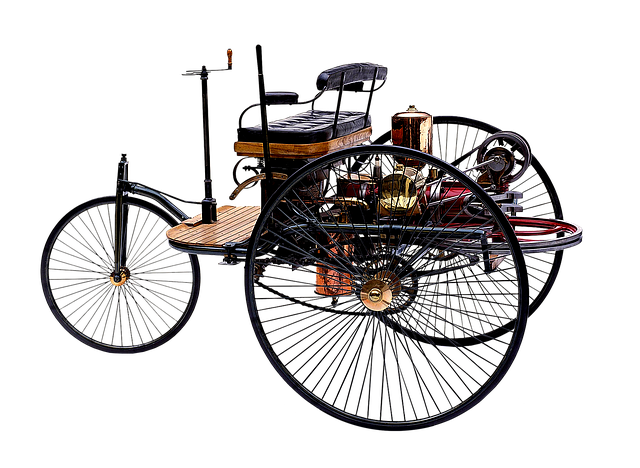Looking to register your car in California? This comprehensive guide walks you through the entire process, from understanding the requirements to completing the application. First, gather essential documents including proof of ownership and insurance. Next, visit a local California Department of Motor Vehicles (DMV) office or use their online services. Key steps include verifying your Vehicle Identification Number (VIN) with a DMV vin verifier. Ensure all details are accurate before final submission.
- Understand the Requirements for Car Registration in California
- Gather Necessary Documents for Vehicle Registration
- Visit a California Department of Motor Vehicles (DMV) Office
- Complete the Vehicle Registration Application Process
- Verify Your Vehicle's VIN and Complete Final Steps
Understand the Requirements for Car Registration in California

Registering a car in California involves understanding specific requirements to ensure a smooth process. Before you begin, familiarize yourself with the state’s regulations and necessary documents. One crucial step is verifying the Vehicle Identification Number (VIN) through a reputable source like a DMV VIN verifier or mobile vin verification services. This ensures the vehicle’s history is clear and helps prevent fraud.
Additionally, for peace of mind, consider conducting a vin inspection to confirm the vehicle’s authenticity and identify any potential issues. Having these steps in place allows you to navigate the registration process with confidence, ensuring your new car’s legal status in California.
Gather Necessary Documents for Vehicle Registration

Before registering your car in California, ensure you have all the required documents ready. The process typically involves several key pieces of information and verifications. One crucial step is to obtain a Vehicle Identification Number (VIN) verification from a reliable source like the DMV or through mobile vin inspection services. This unique code identifies your vehicle and is essential for registration.
Gathering these documents and completing the VIN inspection process, whether done online or via a mobile vin verification service, ensures that you meet all legal requirements. It’s important to note that specific documentation needs may vary based on factors like ownership history and vehicle type, so double-check with the California DMV for accurate and up-to-date information before beginning the registration process.
Visit a California Department of Motor Vehicles (DMV) Office

To begin the registration process for your car in California, start by visiting a local California Department of Motor Vehicles (DMV) office. This is where you’ll initiate the transaction and gather all necessary documents. The DMV will verify essential information, including the vehicle’s identification number (VIN). Utilizing a reliable VIN verifier like the ones offered by mobile vin verification services can streamline this step, as these tools ensure accurate data exchange.
At the DMV, bring your car’s registration documents, proof of insurance, and valid identification. A mobile vin inspection may also be conducted to confirm vehicle details, offering added convenience for busy Californians. This efficient process allows you to complete car registration swiftly while ensuring all required verifications are met.
Complete the Vehicle Registration Application Process

Completing the Vehicle Registration Application is a straightforward process when you utilize the services offered by the California Department of Motor Vehicles (DMV) and their VIN verifier tools. Start by gathering all necessary documents, including your vehicle’s registration certificate from the previous state, proof of insurance, and identification documents such as a driver’s license or passport. The DMV provides an online application form that you can fill out before visiting a local office, saving time and effort.
One efficient method to ensure accuracy is through mobile VIN verification using the official DMV tools. This process allows you to check your vehicle’s history, including any reported accidents or outstanding issues, by simply entering your Vehicle Identification Number (VIN). With this information at hand, you can proceed with confidence, knowing that all required details are correct, making the registration process faster and smoother.
Verify Your Vehicle's VIN and Complete Final Steps

After confirming your vehicle’s eligibility for registration with a valid registration fee, it’s time to verify your Vehicle Identification Number (VIN). This critical step ensures that the data associated with your car matches what’s on record. You can perform this using a DMV VIN verifier or even a mobile vin verification app for added convenience. These tools cross-check the VIN against state databases to ensure its authenticity and history, confirming it’s not stolen or has any outstanding issues.
Once your vehicle passes the VIN inspection, you’ll need to complete final steps like paying the registration fee and providing necessary documentation. This may include proof of insurance, a completed title transfer (if applicable), and identification documents. Some counties in California offer online registration services while others require in-person visits at a local DMV office. Always check with your specific county’s requirements for a seamless registration process.
Registering your car in California is a straightforward process that requires understanding the necessary steps and gathering the right documents. By visiting a local DMV office, completing the registration application, and verifying your vehicle’s VIN using a reliable dmv vin verifier, you can ensure a smooth and efficient registration experience. Remember to keep all relevant records up-to-date to maintain compliance with California’s motor vehicle regulations.
